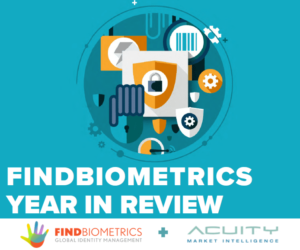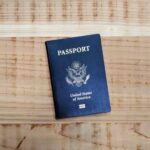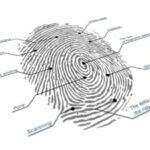Welcome to FindBiometrics’ digest of identity industry news. Here’s what you need to know about the world of digital identity and biometrics today:
Australia Mulls Biometric ‘Alternatives to Detention’
Government authorities in Australia have been mulling the use of electronic monitoring systems to help deal with a backlog of detained immigrants. Citing a document obtained through a freedom of information request, The Guardian reports that a briefing note dated from August suggested the Home Affairs department consider the use of technologies enabling ‘alternatives to detention’, with voice and facial recognition technologies among those that could help to track immigrants who have been released from detention.
India Plans Aadhaar Enrolment From Birth
Indian authorities are planning to implement an Aadhaar enrolment system that would see newborns added to the national biometric ID program across the country, according to a report from Global Government Forum. Infants would be assigned an Aadhaar number at birth, and would then enroll their fingerprint and iris biometrics at the age of five. These biometrics would be updated when an individual turns 15. Sixteen states in India already link birth registrations to Aadhaar numbers.
Scotland to Trial Digital ID in 2023
The ruling Scottish National Party will trial a digital ID system next year in collaboration with Disclosure Scotland, the government agency tasked with providing background check services in the country. As the Scottish Daily Express reports, the pilot will entail the launch of a single sign-on system for Disclosure Scotland users, which could later be expanded for use across other government agencies such as healthcare services providers. The domestic firm Scott Logic was contracted to develop the digital ID system last year.
TSA Deploys CAT-2 Terminals at Denver Airport
The Transportation Security Administration (TSA) has announced the deployment of CAT-2 terminals for traveler verification at the Denver International Airport. The next-generation Credential Authentication Technology terminals are designed to capture the traveler’s face image and compare it to their photo ID, thereby verifying the traveler’s identity and negating the need for the traveler to present a boarding pass. The CAT-2 terminals can also read state-issued digital driver’s licenses and IDs, with the functionality being rolled out shortly after Apple’s mobile ID system went live in Colorado.
SITA Lays Runway for Biometric Passenger Screening at Geneva Airport
SITA has extended its partnership with Geneva Airport, laying the groundwork for the introduction of biometric passenger screening kiosks in the near future. The company announced that it has installed self-service systems at check-in, bag drop, and security, and that by the summer of next year it will have deployed 30 Smart Path TS6 kiosks, which support facial recognition. “Once the biometric capability is activated, passengers will be able to seamlessly complete various steps of the journey such as check-in and bag drop by simply scanning their face at each touchpoint,” SITA explained in a statement.
Italian Bank Trials IDEMIA’s Biometric Payment Card
The Italian financial services provider Sella is piloting biometric Visa cards with select customers. The cards, provided by IDEMIA, feature an embedded fingerprint sensor, with customers invited to enrol their biometrics at home via a specialized kit. Commenting on the pilot, Sella Personal Credit GM Giorgio Orioli noted that the cards use an authentication mechanism that is already commonplace on smartphones, adding that the pilot “highlights the Group’s constant focus on offering increasingly cutting-edge solutions” to meet customers’ needs.
iProov Enables Selfie Onboarding for UBS
iProov has enabled selfie-based onboarding for clients using UBS’s key4 service, a digital-only banking solution for high-net-worth clients. Previously, UBS was using video calls to verify the identities of key4 clients; now, they can enroll in the service by submitting a selfie and a photo of their official ID, with facial recognition being used to match them.
Neurotechnology Launches ‘Expansive’ Surveillance Solution
Neurotechnology has launched a new surveillance solution as part of its computer vision portfolio. Dubbed ‘SentiVeillance Cluster’, the solution is designed to analyze multiple video streams simultaneously, and to combine multiple services into a single ‘cluster network’. It supports facial recognition, demographic classification, license plate recognition, and vehicle and pedestrian detection. In announcing the solution, Neurotechnology explained that it “has been designed for expansive surveillance systems supporting continuous video streams from multiple servers.”
Incode Teams With Liga MX on ‘Fan ID’ Safety Solution
Incode Technologies, a specialist in selfie-based identity verification, has announced that the Mexican soccer division Liga MX will implement its ‘Fan ID’ solution across all of its stadiums in the country. The company is framing the deployments as a safety measure, asserting in a statement that Fan ID will be used to onboard over 5 million fans and process 50,000 people per game, all while “identifying troublemakers and preventing them from attending future events.”
Sleep Startup Raises $9.6M in Series A
Sleep health startup Wesper has raised $9.6 million in a Series A funding round that featured contributions from Valor Equity Partners, Bryer Capital, Spark Capital, and certain angel investors. The company has been developing a “home sleep lab” comprising wireless biometric sensors and AI algorithms that can be used to assess things like sleep apnea. The company says the new funding will help it to build partnerships with sleep clinics and coaches, hospitals, insurance companies, and even dental clinics.
Intel Unveils 96 Percent Accurate Deepfake Detector
Intel has unveiled a deepfake detection system that it claims has a 96 percent accuracy rate. Dubbed ‘FakeCatcher’, the solution is designed to operate in real time, and is largely based on assessing signs of blood flow on a subject’s face through a process called photoplethysmography. “You cannot see it with your eyes, but it is computationally visible,” explained Intel Labs researcher Ilke Demir, in an interview with VentureBeat.
Wherever You Go, He Is Watching
A number of evangelical churches in Brazil are using facial recognition technology during worship services. According to a report from Christianity Today, the biometric technology is being used to identify individuals and collect attendance data, and also to estimate churchgoers’ moods based on their facial expressions.
–
November 21, 2022 – by Alex Perala









Follow Us